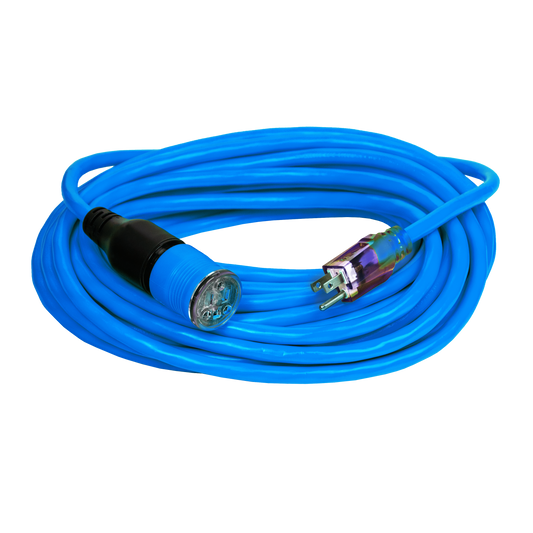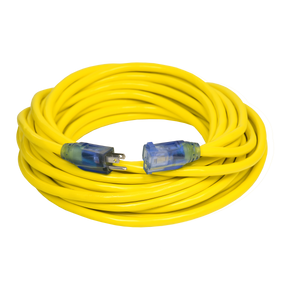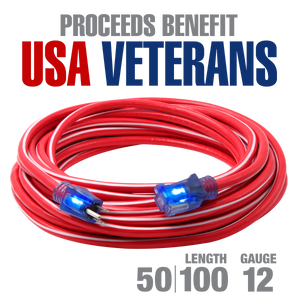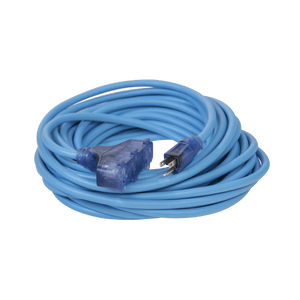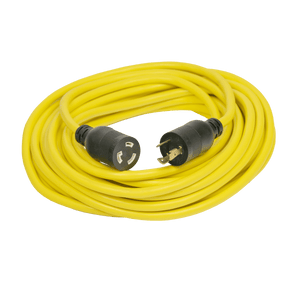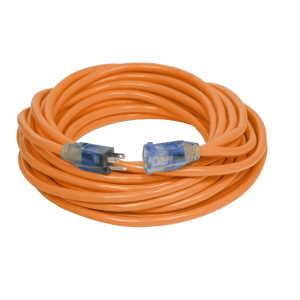50 FT
Choosing The Best 50 Ft Extension Cord
When shopping for the right extension cord, the length is one of the most important factors to consider. With that said, read on below to find out why you should consider... Read More
Choosing The Best 50 Ft Extension Cord
When shopping for the right extension cord, the length is one of the most important factors to consider. With that said, read on below to find out why you should consider choosing a 50 ft extension cord; and what to look for in the best product.
Longer Is Better
When buying an extension cord it is always best to choose one that is longer than you use on a regular basis. There are many benefits of buying a longer extension cord. For starters, with a longer cord, you will always be able to reach the nearest power outlet, without stretching it too tightly. A longer extension cord can also save you from having to buy another cord in the near future.
Most importantly, using a longer extension cord means that you don’t have to connect two or more cords together just to get the length you need. Linking a number of shorter extension cords translates into a higher voltage drop due to increased resistance.
Gauge vs. Application
The right extension cord should also come in a gauge that matches the intended application. Simply put, the gauge refers to the diameter or thickness of the wires in the cord. The gauge of a wire is normally measured in American Wire Gauge (AWG) – a lower gauge number indicates a thicker wire. The amount of current that can be drawn through a wire/cord is determined by the gauge; the thicker the wire, the higher the amount of current that can be carried without the risk of overheating.
So, if you intend to use the 50 ft extension cord in light-duty applications, 16 AWG wires will be sufficient; while medium usage applications (to power TVs and computers) will require 14 AWG wires. Lastly, for heavy usage (think power tools), 12 AWG wires are necessary.
It is important to remember that exceeding the load capacity of an extension cord may cause overheating, and even fires.
Cord Flexibility Matters
A longer extension cord should also be flexible; otherwise, stretching and coiling the cord before, during, and after use might turn out to be a challenge. If you will be using the cord in tight spaces you will also need it to be flexible. The most flexible extension cords tend to be those with the lowest temperature rating.
Locking Connectors
By choosing an extension cord with locking connectors you can be sure that the connection will hold, even under enormous pull pressure. Supporting up to 80 pounds of pull pressure, our Pro Lock® extension (12/3 AWG) cords come with 64 strands of 30 AWG pure copper wires. To remove the plug, simply pull back on the collar to unlock the connector.
Continuous Ground Monitoring (CGM)
To ensure safety during use, you can check whether there is ground continuity by simply glancing at the end of CGM extension cords. These cords come with built-in lights at each end – the light on the plug indicates that current is flowing from the socket and through the cord, while the connector light indicates ground continuity. A CGM cord not only helps you ensure the safety of your crew but also ensures that your operation is OSHA compliant.
Choose The Best Cord For Your Specific Needs
Read Less

